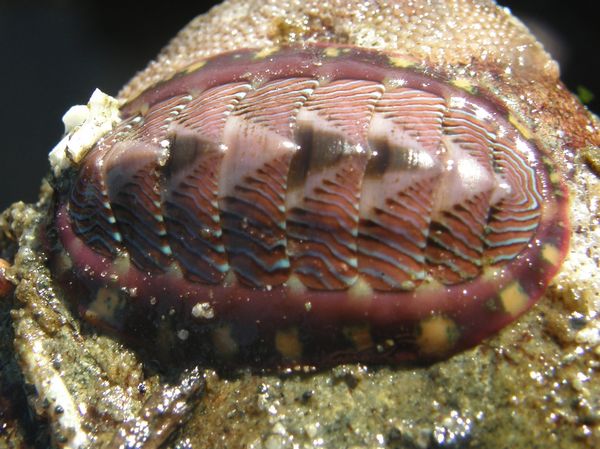|
| | |
Life Beneath the Waves - Page 2 |
| | |
|
Horse Clams, Tresus capax, also known as Fat Gapers, can weigh as much as 4 lbs (2 kg) and be 8 in (20 cm) long. They generally stay safely buried deep (20 in; over .5 m) in the sand and rarely venture on to the surface. |
| | |
 |
This beautiful brown shell is a Pacific Razor Clam, Siliqua patula. If you find one of these clams consider yourself very lucky as they have the ability to completely bury themselves in the sand in seconds. |
| S |
.jpg) |
_ |
.jpg) |
Nuttall's Cockle, Clinocardium nuttali, is a stunning shell to come across with its pattern of ridges and ribs as well as its symmetrical shape.
As the cockle ages the ribs gradually wear down.
Together the two shells create a sort of heart shape and so it is sometimes given the name Nuttall's Heart Cockle. |
|
This familiar looking shell is the Native Littleneck, or Common Pacific Littleneck, Protothaca staminea, a small clam or cockle.
This clam is a poor digger and so is confined to near the surface.
It is mostly white with tints of beige or yellow. Its interesting arrangement of ribs and circles create a fascinating appreciation of the beauty or patterns in nature, reminding one to always pay close attention to the nature around. |
| | |
|
|
 |
This Sitka Periwinkle, Littorina sitkana, lies besides some of the barnacles that have attached themselves to the rocks. This shellfish is typically found in the intertidal zone along the water's edge. Its colour varies from brown or black to yellow or orange. |
|SD |
|
Lewis's Moonsnail, Polinices lewisii, is one of the larger snails found on sandy flats. It hunts clams in places the clams consider safe. The snail is itself hunted by the Sunflower Star. |
| |
 |
_ |
 |
Another interesting organism that can be found in tide pools Sea Urchin, Strongylocentrotus purpuratus. The image on the right is a sea urchin shell, the remains of one of the bright purple urchins. |
| |
|
|
|
Chitons (pronounced KY-tons) are flattened, oval marine animals, usually with 8 overlapping shell plates or valves like this Blue Waved Chiton, Tonicella undocaerulea. They are able to roll up into a ball when disturbed. |
| |
 |
|
 |
The Gumboot Chiton, Cryptochiton stelleri, is the giant among the chitons growing up to 13 inches/33 cm in length. Generally, the Gumboot Chiton is reddish brown with a rough texture and no distinctive plates on the back. Underneath the foot is yellowish (above right). This Gumboot is very often washed ashore, knocked off its footing by rough seas. |
| || |
|
|
|
Continuing our stroll, we may encounter those blobs of jelly that chase people out of the sea: the jellyfish. This is the usual way that many people see jellyfish, high and dry on the beach. |
| | |
 |
This is Lion's Mane Jellyfish, Cyanea capillata. It is truly fascinating to watch this creature swimming. Like an inflated balloon, the pulsating bell is unsurpassed in grace as it propels through the water, the long tentacles flowing majestically behind. |
| |
|
|
| | |
| Dereila Nature Inn Home > Lagoon Trail > Marine Life Guides, Articles, Trivia and More! > Life Beneath the Waves |
| |
|
|
|




.jpg)
.jpg)









